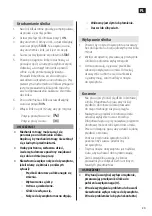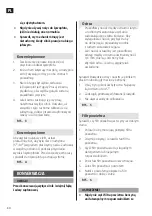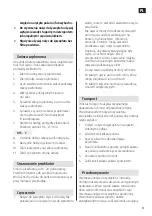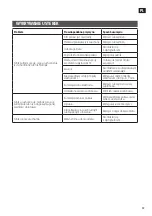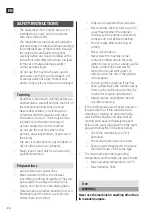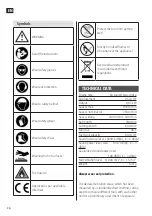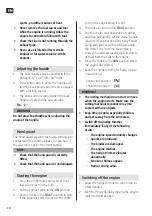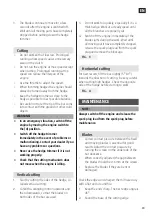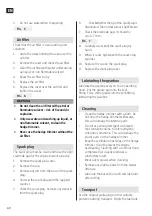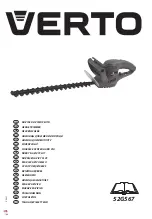
EN
39
3. The blades continue to move for a few
seconds after the engine is switched off.
Wait until all moving parts have completely
stopped before putting down the hedge
trimmer.
Cutting
• Do not work with at low revs. Prolonged
running at low speed causes unnecessary
wear on the clutch.
• Do not run the engine at max speed except
when cutting. Prolonged running at top
speed can reduce the lifespan of the
engine.
• Use the throttle to adjust the speed.
• When trimming hedges the engine should
always be turned away from the hedge.
• Keep the hedge trimmer as close to the
body as possible for best possible balance.
• Be careful not to let the tip of the bar come
into contact with the ground or other solid
objects.
WARNING!
• In an emergency situation, switch off the
engine by moving the engine switch to
the (0) position.
• Switch off the hedge trimmer
immediately in the event of problems or
malfunctioning. Contact your dealer if you
have any problems or questions.
• Never use the hedge trimmer if it is not
working properly.
• Check that the cutting mechanism does
not move when the engine is idling.
Vertical cutting
1. Start by cutting the sides of the hedge, so-
called vertical cutting.
2. Cut with a swinging motion upwards and
then downwards, so that the blades on
both sides of the bar are used.
3. Do not work too quickly, especially if it is a
thick hedge. Work at a steady speed until
all the branches are properly cut.
4. Switch off the engine immediately if the
blades jams during the work. Wait until
all moving parts have completely stopped,
release the spark plug lead from the spark
plug and remove the blockage.
FIG. 3
Horizontal cutting
For best results, tilt the bar slightly (5°-10°)
towards the direction of cutting. Be very careful
when cutting high hedges. Check the opposite
side of the hedge before starting to work.
FIG. 4
MAINTENANCE
NOTE:
Always switch off the engine and release the
spark plug lead from the spark plug before
maintenance.
Blades
• Correct contact pressure between the fixed
and moving blades is essential for good
results. Adjust the contact pressure by
turning the screws on the underside of the
bar clockwise.
• When correctly adjusted the gap between
the blades should be 0.6 mm at the screws.
• Replace the blades if they are bent or
damaged.
Check the edges and sharpen them if necessary
with a flat and a round file:
1. Keep the ends sharp. The best edge angle is
45°.
2. Round the base of the cutting edge.
Summary of Contents for 002-562
Page 4: ...1 2 90 90 ...
Page 5: ...4 3 5 7 6 ...





